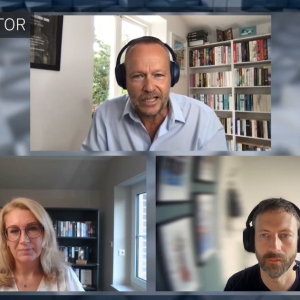At the end of 1997, the enterprise resource planning software giant SAP AG sent out an unequivocal message. By acquiring a 50% stake in Kiefer & Vettinger (K&V), a privately held sales force automation software specialist little-known outside of its native Germany, SAP affirmed its intention to enter and eventually grab a major share of the embryonic customer relationship management (CRM) software market. SAP’s acquisition threw the gauntlet at the feet of Siebel, Vantive, Aurum and other CRM package vendors, but the move was as understated as it was unexpected.
While K&V was founded in 1986 and evolved to become one of the leading European sales force automation (SFA) vendors, it did not manage to expand beyond the borders of German speaking countries. In 1996, it became an SAP partner and signed a deal to integrate its mobile sales applications with SAP’s manufacturing, accounting and other R/3 back-office systems, something which helped K&V achieve revenues of $19.1m in the year prior to its purchase.
In March 1998, SAP picked up a further 30% of K&V for an undisclosed but insignificant sum. The K&V absorption into SAP was completed in September 1998 when it became SAP Labs Mannheim. That relationship is now forming the core of SAP’s push into the CRM market, says Matthew Dove, SAP’s CRM roll-out manager in the UK.
SAP may have needed to kick-start its CRM push with a takeover, but Henning Kagermann, CEO of SAP, has made it clear that he does not intend to make any further major acquisitions in front-office software. Generally, we tend to develop [software] in-house rather than buying and going through what is often a painful integration process, says Dove, mobile sales is a specialized area, which is why we acquired K&V.
However, for all the talk of SAP’s launch into the CRM market in 1998, the year saw very little in terms of products. But things should change this year with the launch of a suite of software that will begin to span many of the aspects of customer interaction.
In the first quarter of this year, the company will ship SAP Sales 1.1, an SFA application, and alongside that, SAP Service 1.1, a customer service package. Both are expected to be generally available in June. Later, in the fourth quarter, SAP intends to broaden its initial CRM portfolio with the introduction of SAP Marketing 1.2, according to Dove. In addition, there is already some customer care functionality, such as computer telephony, within version 4.0 of SAP R/3.
In many ways, SAP has an intrinsic advantage in this market. It is targeting its CRM software at users of its R/3 ERP package, emphasizing the benefits of the integration of ERP and CRM, but it thinks it can also sell to the general CRM applications market.
However, Gareth Herschel, a CRM market analyst at the Gartner Group, thinks that the leading front-office companies probably have little to worry about from SAP. Even though SAP already has the contacts and presence, it hasn’t necessarily demonstrated competence in [CRM functionality], he says.
SAP will be a major presence in the front-office market in the long term, thinks Herschel, but it is unlikely ever to offer best of breed functionality – its forte will remain in ERP. But, he warns, SAP is still a lurking presence for SFA companies such as Siebel and Vantive.
This article originally appeared in Computer Business Review






